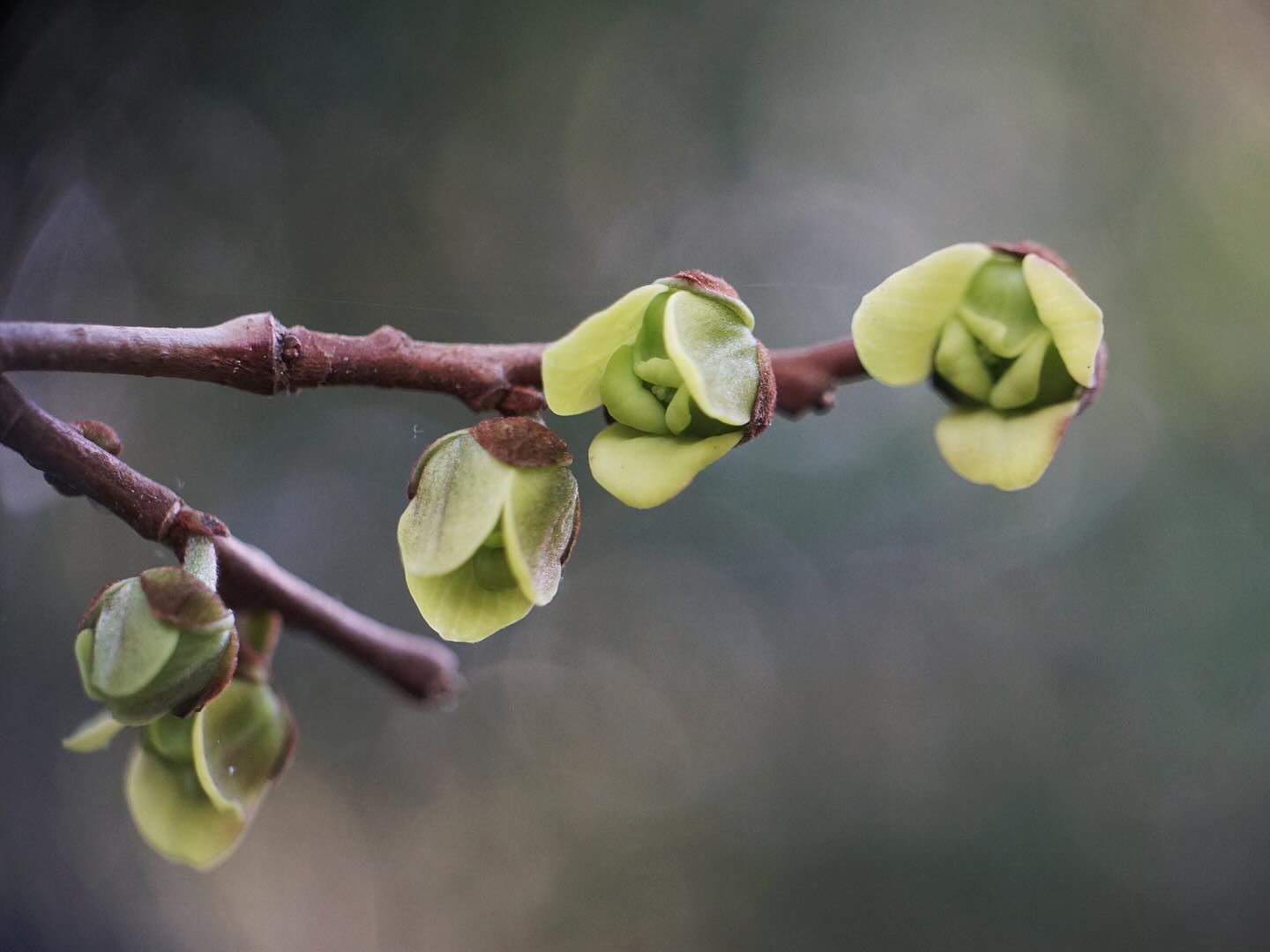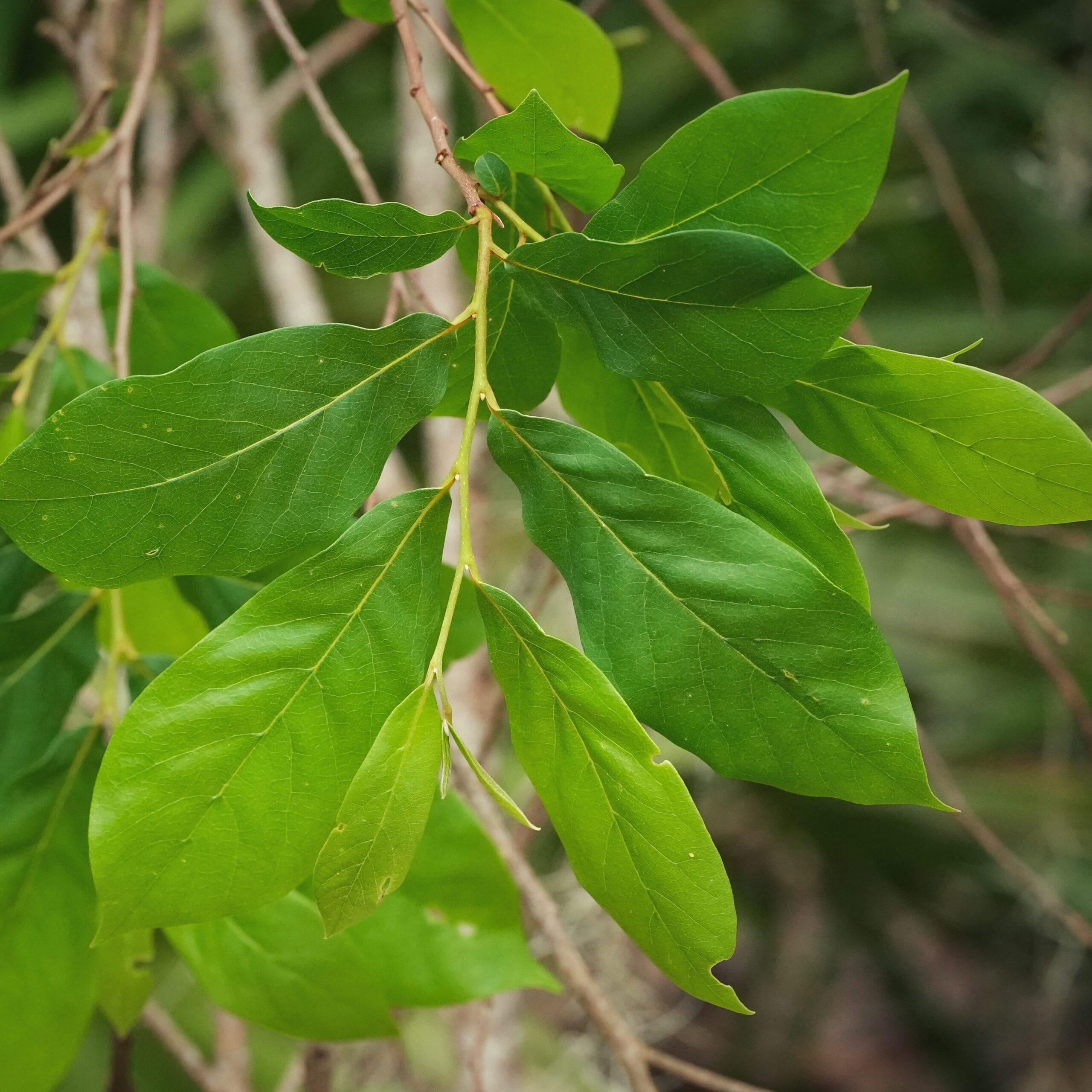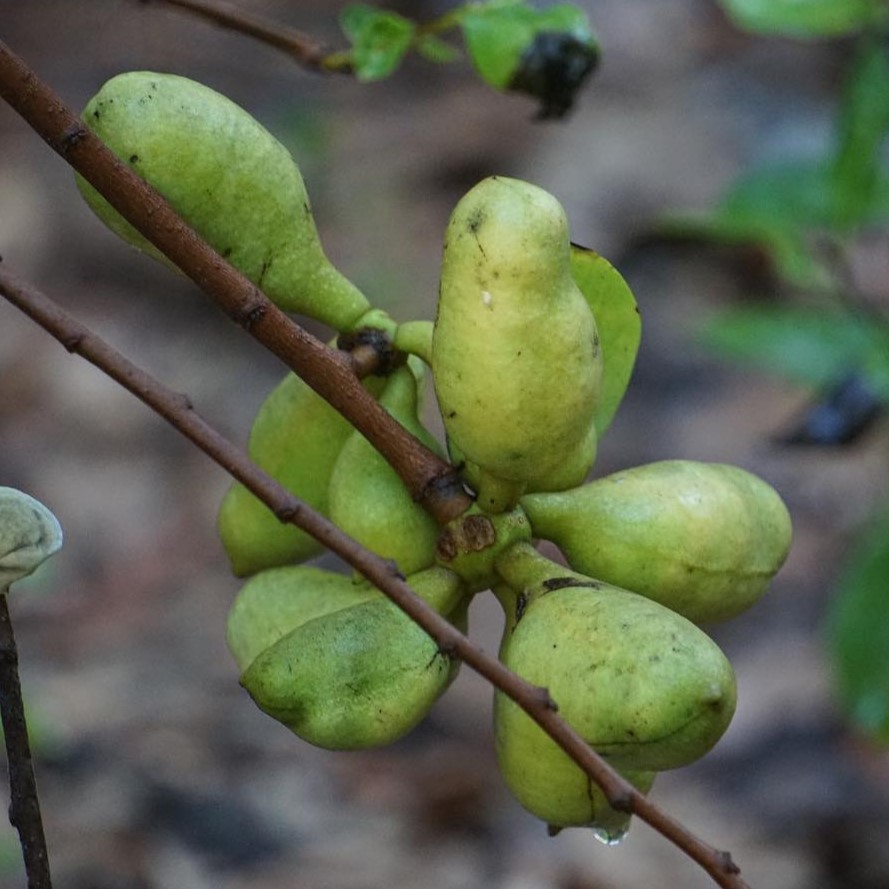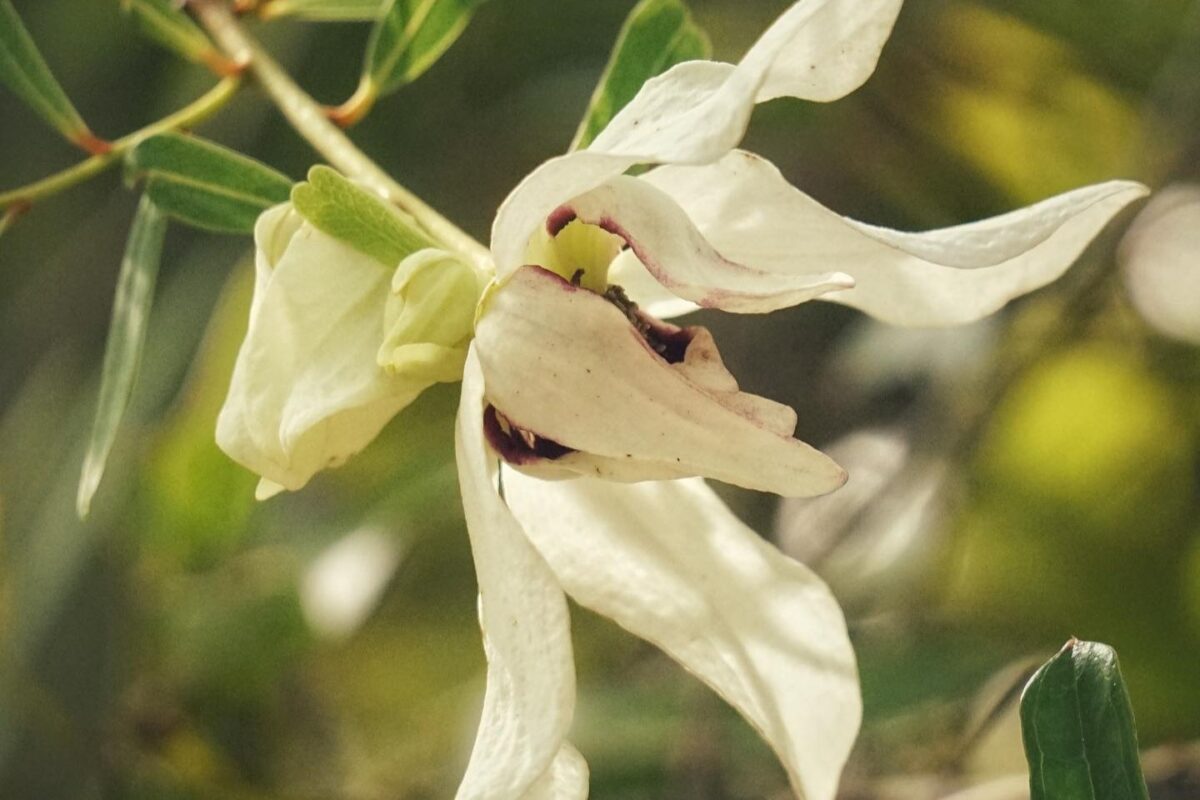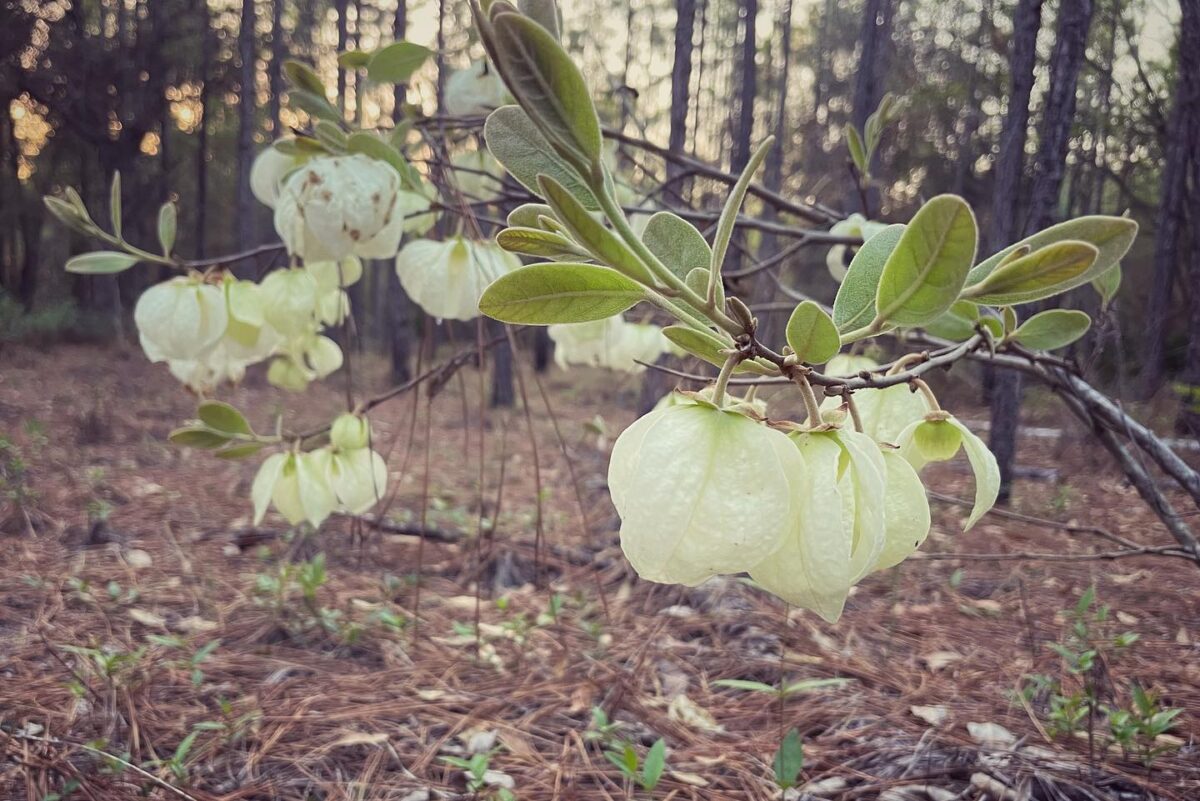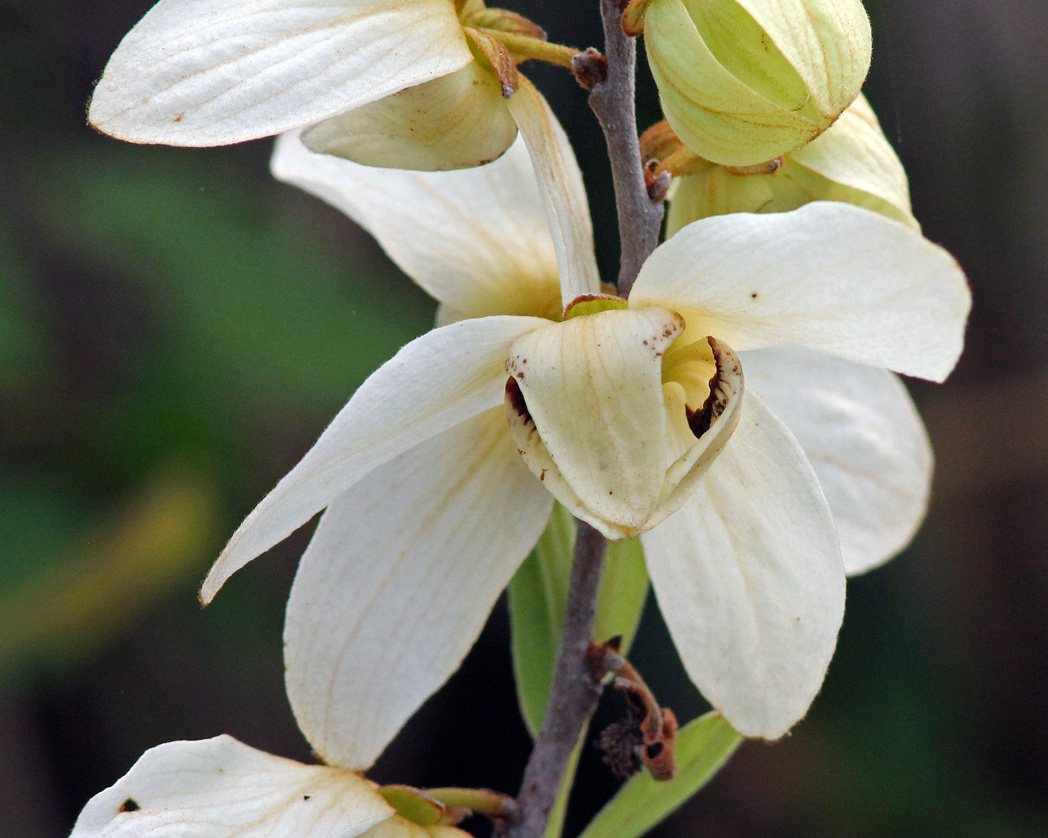Smallflower pawpaw
Pictured above: Smallflower pawpaw (Asimina parviflora) by Betsy Harris. Click on terms for botanical definitions. View post as a PDF.
Smallflower pawpaw (Asimina parviflora) is a deciduous flowering shrub to small tree found in floodplain forests and hardwood hammocks throughout the Southeastern Coastal Plain from southern Virginia to eastern Texas. In Florida, it ranges from the Panhandle throughout the peninsula as far as south as Highlands County. It is a larval host for the Zebra swallowtail butterfly and Pawpaw sphinx moth. The fruits, which ripen in summer through fall, are a favorite of birds and small mammals. Its primary pollinators are flies and beetles.
As its common name indicates, Smallflower pawpaw has the smallest flowers of the genus Asimina, reaching only about ¾ inch long and across. Flowers have six light green to maroon petals. The three outer petals are larger and curve outward; the three inner petals are smaller and generally upright. In contrast to the flowers, its leaves are quite large, reaching up to 6 inches long and 3 inches wide. They are obovate to oblanceolate and arranged alternately. Smallflower pawpaw fruits are 1-3 inches long and cylindrical. They start out light green and ripen to a dark brown. The plant has a long taproot.
While the fruits are edible for humans, it is hard to beat the wildlife to them! Additionally, they must be perfectly to almost overly ripe. According to experienced forager Green Dean, pawpaw fruit should be eaten with caution as some people have an allergic reaction to it. Check out his website for more information on edibility, as well as historical uses of the plant.
Family: Annonaceae (Custard apple or soursop family)
Native range: Panhandle northward and southward into Central Florida
To see where natural populations of Netted pawpaw have been vouchered, visit florida.plantatlas.usf.edu.
Lifespan: Perennial
Soil: Moist to dry well-drained sand or loam
Exposure: Part shade
Growth habit: Up to 15 feet
Propagation: Seed
Florida regions of landscape suitability: North, Central
Garden tips: Smallflower pawpaw is suitable for naturalistic landscapes and butterfly gardens. It does not transplant well. It can tolerate full sun once well established but prefers partial shade and is a great understory planting.
Smallflower pawpaw is occasionally available from nurseries that specialize in Florida native plants. Visit www.PlantRealFlorida.org to find a nursery in your area.
Learn more about Smallflower pawpaw from the Florida Native Plant Society and the Institute for Regional Conservation.
For information on other Asimina species, see these resources:

